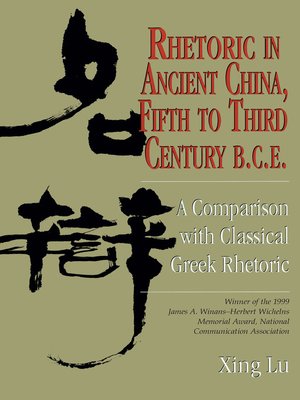Rhetoric in Ancient China, Fifth to Third Century B.C.E
ebook ∣ A Comparison with Classical Greek Rhetoric · Studies in Rhetoric & Communication
By Xing Lu

Sign up to save your library
With an OverDrive account, you can save your favorite libraries for at-a-glance information about availability. Find out more about OverDrive accounts.
Find this title in Libby, the library reading app by OverDrive.



Search for a digital library with this title
Title found at these libraries:
| Library Name | Distance |
|---|---|
| Loading... |
Xing Lu examines language, art, persuasion, and argumentation in ancient China and offers a detailed and authentic account of ancient Chinese rhetorical theories and practices within the society's philosophical, political, cultural, and linguistic contexts. She focuses on the works of five schools of thought and ten well-known Chinese thinkers from Confucius to Han Feizi to the the Later Mohists. Lu identifies seven key Chinese terms pertaining to speech, language, persuasion, and argumentation as they appeared in these original texts, selecting ming bian as the linchpin for the Chinese conceptual term of rhetorical studies.
Lu compares Chinese rhetorical perspectives with those of the ancient Greeks, illustrating that the Greeks and the Chinese shared a view of rhetoric as an ethical enterprise and of speech as a rational and psychological activity. The two traditions differed, however, in their rhetorical education, sense of rationality, perceptions of the role of language, approach to the treatment and study of rhetoric, and expression of emotions. Lu also links ancient Chinese rhetorical perspectives with contemporary Chinese interpersonal and political communication behavior and offers suggestions for a multicultural rhetoric that recognizes both culturally specific and transcultural elements of human communication.







